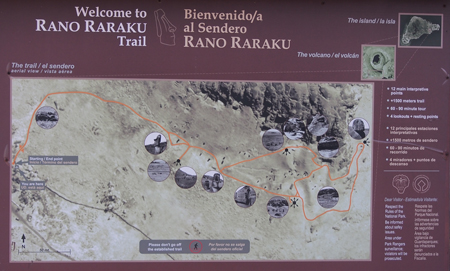
|

Looking out at the quarry and moai
|
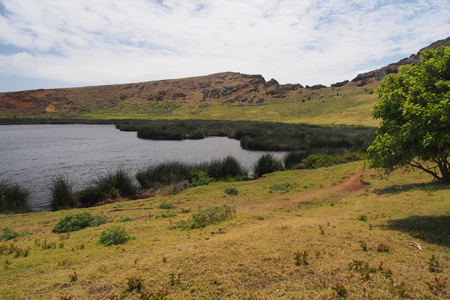
At the crater
|

Interior walls of the crater |
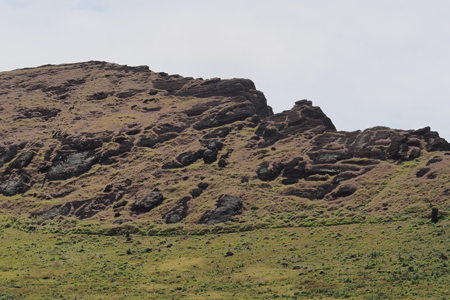
Interior walls of the crater |
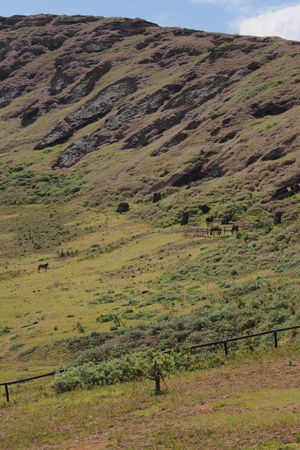
The horses like it too.
|
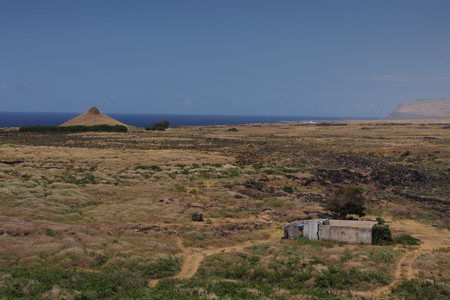
View from the crater trail
|
Walking back down to the quarry (from the crater), we were treated to some wonderful views of the surrounding land.
|
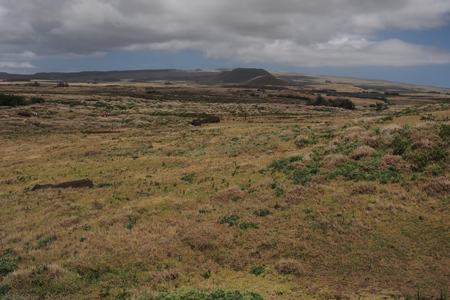
View from the crater trail - you can see fallen moai scattered about the land
|
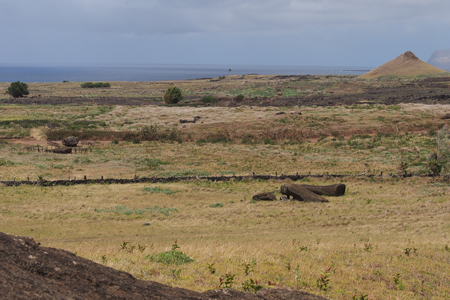
View from the crater trail - you can see fallen moai scattered about the land |

At the quarry |

|
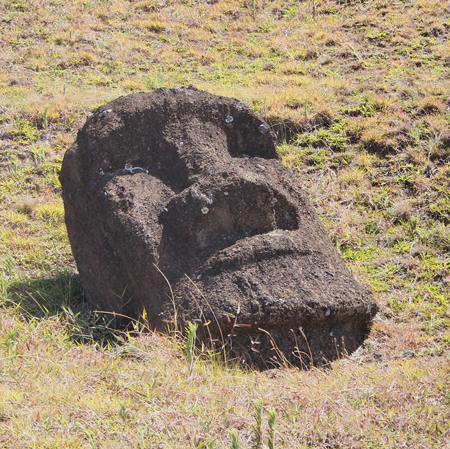
|
When we went back down the outside of the crater we walked to the area of the most recent carvings. We saw several statues in the beginning stages of the carving, many statues fallen on their faces, and some left standing - possibly because the workmen had to go off to war against another tribe. While at the quarry the many tribes worked in peace side by side.
We looked at several partially carve moai. It is theorized that four teams of maybe 10 men worked around the clock first chiseling the front side of the statue while it was still attached to the cliff face. Some of the 10 or so moai that we could identify, were vertical and some horizontal as the face, belly, and hands were carved. The arms and sides were carved next and then the statues were chipped and pried off of the cliff. The back was carved after the statue was free of the cliff and in a standing position. The carving was all done with primitive obsidian chisels and basalt tools
Once the carving was finished, the statue was moved down the cliff and across many kilometers to the place it was to be set on an ahu. There are seven trails of broken or fallen moai along which the statues were moved from this quarry. This process went on for about 500 years. The more recent moai are taller than the original ones. The largest moai is still flat in the quarry and is about 21 meters (65 feet) tall. The backs of some of the moai, that were not moved far from the quarry, show petroglyphs perhaps telling the story of the man for whom the moai was made.
|
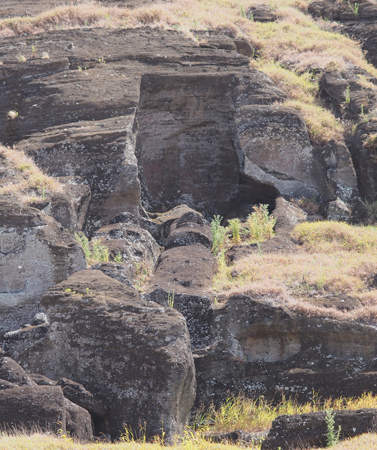
Partially finished carving
|

The largest moai |
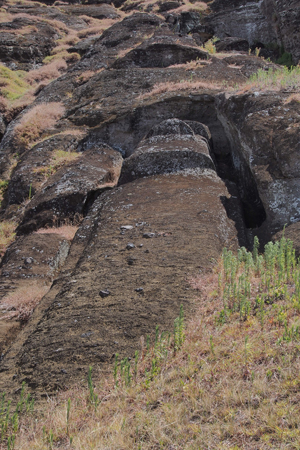
The largest moai
|

Partially finished carving |
There are still two mysteries concerning Rapa Nui. One is the debate about how the island became deforested and the other on how they moved the moai from the quarry. Thor Heyerdahl tried to prove that the statues were moved horizontally on their backs on greased wood logs like a corduroy road. He used this theory to explain the loss of the island trees since the erecting of the statue also required tree trunks to pry it upright. The theory is questionable because it does not explain why so many of the statues ended up on their faces on the way from the quarry. The more recently demonstrated theory suggests the moai were “walked” upright to their destinations. Once the statue was freed from the quarry cliff, it would be pried upright and then tilted, or walked, like you might move a refrigerator, by many men with ropes around the statue’s neck,. We saw a documentary at home demonstrating the moai “walking.” The base of the moai was rounded to help with maneuverability. Legends say the moai “walked” to their ahu.
|
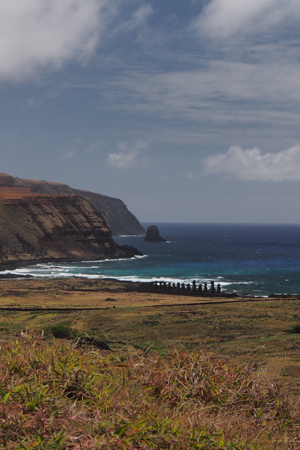
We could look out and see Tonariki in the distance
|

At this quarry is also the only kneeling moai, maybe representing an islander at “prayer” at a ceremony.
|

|
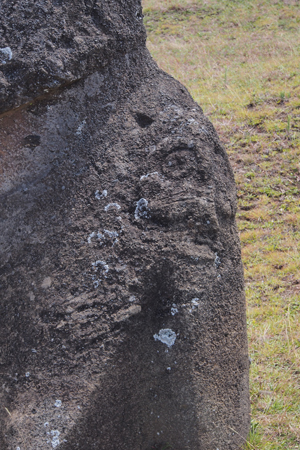
Carving on the moai's shoulder
|
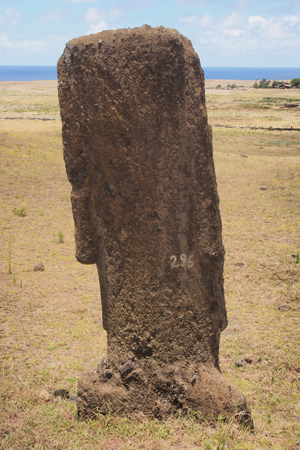
A numbered head |
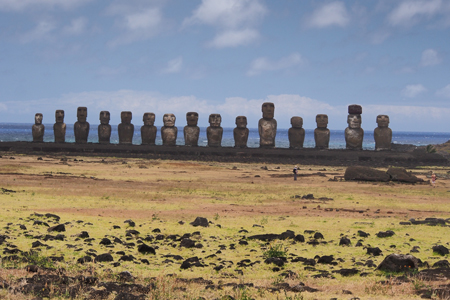
Another view of Tonariki
|
After a relaxing lunch we were taken to Te Pito Kuri. Here is the largest and last moai to be successfully moved. It is 10 meters (31 feet) tall and weighs 80 tons. The pukao or top-notch weighs 12 tons and it is amazing it could be lifted to the top of the statue. It was probably accomplished by rolling it up a dirt ramp and tipped over on top of the head.
|

Lunch site
|
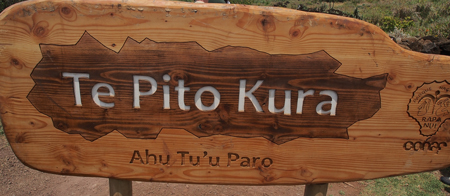
|

Paro (the largest moai) - fallen on his platform or ahu
|

Magnetic rock (80%) iron) - also at Te Pito Kura |
Next stop was at Anakena, the only white sand beach on the island. I had changed into my bathing suit after lunch and was the first of our group to hit the water. It was wonderful - a perfect temperature with gentle waves beyond the shore breakers. The water was clear and clean. I am sorry we were only here for 45 minutes.
|
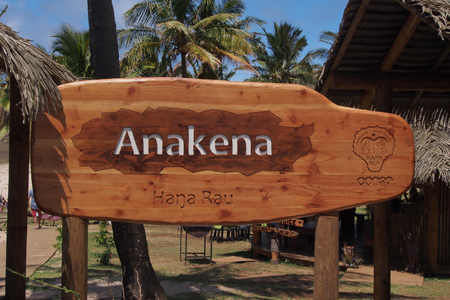
|
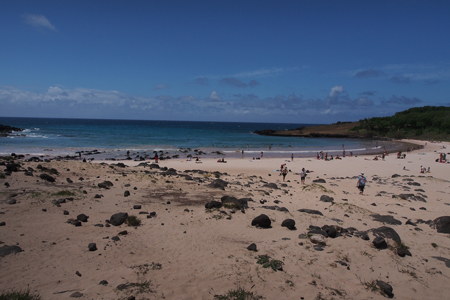
Beautiful beach
|

Gale floating in the water
|
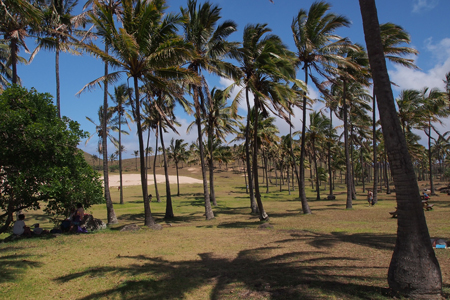
Grounds at Anakena |
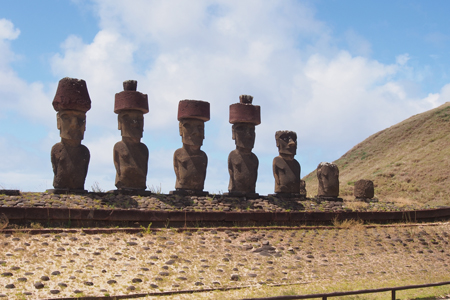
Moai at Anakena
|
We got back to our lodge for a shower, rest, and some peanut butter crackers and then headed out again at 7:30 to await the sunset at a Tahai, a very picturesque place. One of the moai at the site was the only one we have seen with replacement eyes. Originally all the moai had white coral eyes. It gave this one a strange look, like behave or else!
|

|
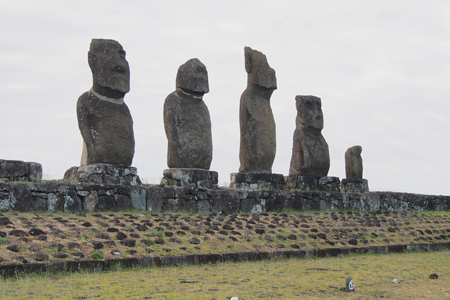
Moai at Tahai
|

Moai with eyes - the only one on the island |
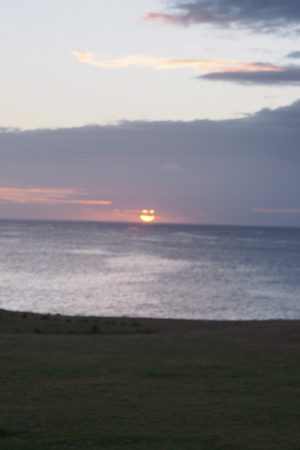
Sunset at Tahai
|
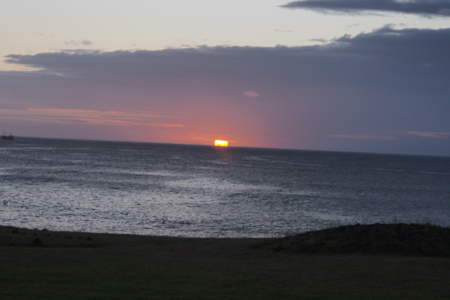
Sunset at Tahai
|

Sunset at Tahai - no green flash |
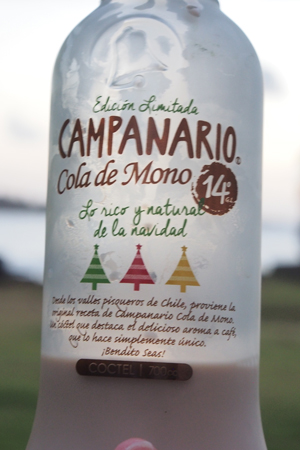
A treat at the beach picnic
|
We had a nice “snack” that was laid out for our evening sunset watching. It included island special empanadas (tuna and cheese for me), white wine or juice, Pringles, and nuts. The sun dropped into the ocean through low clouds over the moai. Very nice!
|





































